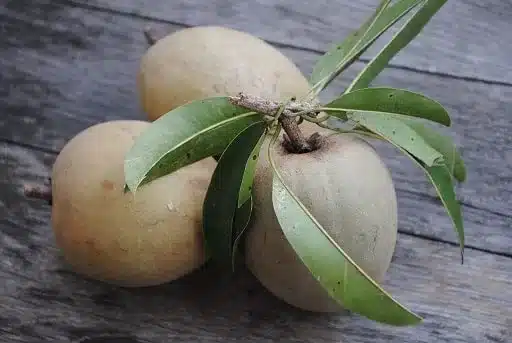Nestled in the warm embrace of tropical and subtropical regions, sapota, also known as chikoo or sapodilla, is a fruit with a name as sweet as its flavor. Despite its relatively modest appearance, this fruit has earned its place in the hearts and palates of people around the world. In this article, we’ll dive deep into the world of sapota, exploring its origins, delightful taste, nutritional benefits, culinary versatility, and more.
A Tropical Treasure
The Origin Story: Sapota, scientifically known as Manilkara zapota, is native to Central America, particularly Mexico, where it was cultivated and consumed for centuries by indigenous communities. Over time, it spread to other tropical regions and is now grown in places as diverse as India, the Philippines, and parts of the United States.
The Appearance: Roughly the size of a small potato, boasts a rough and unassuming exterior. Its skin varies in color from brown to grayish-green. But the true treasure lies within. When sliced open, the flesh is brown and grainy, reminiscent of a ripe pear.
The Sweet Symphony of Flavor
Taste Sensation: Sapota is renowned for its exceptionally sweet flavor, often likened to a harmonious blend of pear, banana, and brown sugar. Each bite is a delightful combination of sugary indulgence and natural goodness.
Nutritional Value: Beyond its scrumptious taste, sapota packs a nutritional punch. Here’s a glimpse of its nutritional benefits:
- Vitamins: Sapota is a good source of vitamin C, which supports the immune system and skin health. It also contains vitamin A, important for vision and overall well-being.
- Minerals: The fruit offers essential minerals like potassium, iron, and calcium. Potassium helps regulate blood pressure and heart health.
- Dietary Fiber: Rich in dietary fiber, aiding in digestion, promoting feelings of fullness, and supporting gut health.
Health Benefits of Sapota
- Digestive Aid: Thanks to its dietary fiber content, sapota is a natural digestive aid. It helps alleviate constipation and supports a healthy digestive system.
- Heart Health: Potassium in sapota helps maintain healthy blood pressure levels, reducing the risk of heart disease.
- Immune Support: The vitamin C content enhances the immune system’s defenses against common illnesses.
- Skin and Eye Health: Vitamin A in sapota contributes to healthy skin and improved vision.
Culinary Versatility
Sapota’s appeal goes beyond its sweet taste and nutritional benefits. It is remarkably versatile in the culinary world:
- Fresh Delight: The simplest way to enjoy sapota is by slicing it open and savoring the sweet flesh. It’s a refreshing and guilt-free snack.
- Dried Delicacy: Dried sapota, often found in natural or artificial forms, offers a chewy, candy-like treat—a healthier alternative to traditional sweets.
- Smoothies and Desserts: Sapota adds a natural sweetness and unique flavor to smoothies and desserts. Blending it into a creamy concoction or using it as a topping for ice cream can be pure indulgence.
- Sapota Milkshake: A popular choice in many tropical countries, sapota milkshake is a creamy and delightful beverage that showcases the fruit’s sweet character.
- Preserves and Jams: Sapota’s natural sweetness makes it an excellent candidate for jams, jellies, and fruit preserves.
Cultivation and Varieties
Sapota trees thrive in tropical and subtropical climates, which makes them well-suited to regions like India, Mexico, and parts of the United States, such as Florida and Hawaii. There are various varieties, each with unique characteristics. Some popular ones include Prolific, Cricket Ball, and Silas Woods, each offering a slightly different flavor, texture, and appearance.
In the world of tropical fruits, sapota stands as a sweet and versatile gem. Its rich history, exceptional flavor, and myriad health benefits make it a treasure worth discovering. Whether you enjoy it fresh, dried, blended into smoothies, or as a topping for desserts, sapota’s sweetness is sure to leave a lasting impression on your taste buds. So, the next time you encounter this modest fruit with a sweet secret, be sure to savor the delightful world of sapota.

